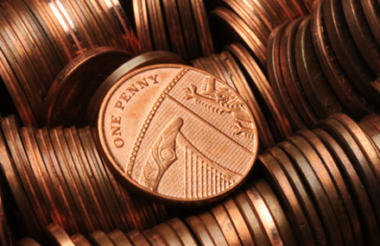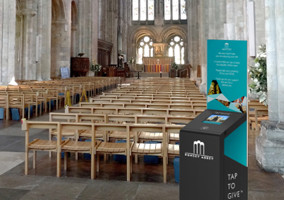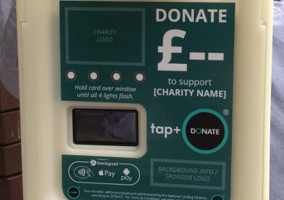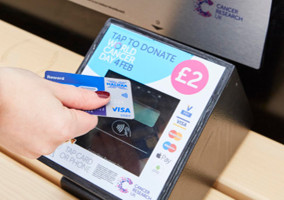As part of the spring statement on Tuesday the chancellor, Philip Hammond, announced a consultation on Cash and digital payments in the new economy, which included the suggestion that 1p and 2p coins could be abolished.
Its reasoning was that six in ten of these coins end up in a savings jar after just one transaction and that 8 per cent of cases they are actually thrown away.
But quickly there was an outcry, with the shadow charities minister, Steve Reed warning in the Mirror that: “If the government goes ahead, it will directly hit the vulnerable people who rely on charities to feed, clothe, house and care for them."
The story was picked up and discussed across the broadcast and social media, with the central concern being that charities stood to lose out.
Within the sector the response was more cautious, with NCVO and the Institute of Fundraising promising to consult with their members before responding properly to the government.
But there were few people who seemed to be in favour of the suggestion and before anyone had had time to make a bunch of large cardboard pennies and mount a protest outside the Treasury, Number Ten announced that pennies are in fact perfectly safe.
Having spent the day looking at the arguments I can’t help thinking that this was a little premature – there is actually a very good argument that if managed correctly the withdrawal of 1p and 2p coins would do charities no harm, and might even result in both a one-off cash boost as people hand their coppers over to charity, and longer term boost as they instead drop 5p or 10p pieces in charity tins.
Some of the media outrage also seemed to lack nuance and an understanding of how modern charities and fundraising works, and I'm not sure that perpetuating the idea that the sector relies on 1p and 2p coins is ideal.
How much is small change worth to charities?
It feels to me that the concern, particularly in the media, is born out the quite dated idea that most fundraising still comes from people absent-mindedly dropping a couple of pence in a tin, without much understanding of how many modern charities operate.
My hunch - and it is just a hunch because there doesn’t seem to be any research on how much is donated to charity in 1p and 2p pieces (if you’re reading this and you have some please send it my way) - is that the sector is actually less reliant on 1p and 2p coins than people think.
According to the latest NCVO Almanac of the sector’s total £45.5bn income, £10.1bn comes from donations by individuals.
While the Charities Aid Foundation’s annual UK Giving report, suggests the average donation amount at around £40. It also found that cash is the most common way of giving in all age groups, with 58 per cent saying they had given this way.
But I couldn't find any figures on how much of this is 1p and 2p coins, it’s actually quite likely and indeed highly plausible that larger coins or even notes already make up a large portion of this.
Daniel Fluskey, head of policy at the IoF, says that while the value of copper donations “might not be huge” the sector needs to consider “potential for wider impact”.
“We’ve already had some concern from our members around the proposed change, and heard examples of where people collecting small change on a regular basis does provide needed and welcome money for local and smaller charities,” he says.
While on NCVO’s blog, Karl Wilding, director of policy, says; “The loss of loose change in the form of 1p and 2p coins is unlikely to make a major dent in the total amount given to charity. It might even increase what people give, if we instead give 5ps and 10ps. Either way, we’d be hasty in dismissing out of hand the importance of loose change.”
Downward trend for cash
People are using less cash across the board. As they switch to paying for things via contactless cards or mobile devices, people are carrying less and less cash.
A survey at the end of 2016 estimated that on average people carried less than £5 on them.
At around the same time Pennies, a mobile micropayment donation platform, did some research that found that 58 per cent of people had given using a donation tin – and that this was the most popular form of giving.
But this is a steady downward trend from previous years – 62 per cent in 2015 and 67 per cent in 2014. Pennies is shortly due to repeat the research and the results will surely feed-in to the current debate.
Alison Hutchinson, chief executive of Pennies says: “All Pennies has done is digitized the traditional charity box to meet the increasing trend towards cashless – or ‘less cash’ – giving. If copper coins were to disappear altogether, the penny as a ‘unit’ remains; and Pennies, and an array of other methods, will still offer that ad hoc way of giving small change digitally.”
Pennies launched in 2010 as a digital version of the traditional collection tin to collect small donations at the point of payment by rounding the amount up. Since then it has raised £12m for over 300 charities and has more than 50 retail partners.
Charities need to change with times
While within the sector the argument seemed to be that donating small amounts to charity tins was the way to teach children about giving.
To the latter point I’d argue two points. 1p in 1978 is now roughly equivalent to 5p in 2018, because of inflation – just give children 5p coins.
Secondly, when I was small, in addition to giving me coppers to put in charity tins, my parents taught me how to write a cheque to pay bills, use a telephone box and look up information in the Yellow Pages. Now I don’t have small children, but I’d be very surprised if anyone now is teaching their children any of these skills.
Digital donations still account for a relatively small part of the total pot, but the signs are that they are increasingly important, with the latest research from Blackbaud finding that online donations had risen by 18 per cent last year.
Charities need to be alert to how people’s behaviour is shifting.
While we can’t be sure exactly how much is being donated in copper coins, I am reasonably confident in arguing that it is declining, all be it from a high starting point.
With that in mind charities should really be paying more attention to the increasing prevalence of contactless payments and think how this could be harnessed to support charities better.
Donation solutions do exist, but at the moment the devices are much expensive than a bucket. There are also practical technology issues to do with needing a power source and reliable internet connection to work properly.
Fluskey says: “Contactless payments are rising, and innovative new ways of giving are popping up all the time, from Cancer Research’s smart benches and shop windows, to the Blue Cross using dogs for mobile contactless fundraising, but that not every charity is there yet, and for some smaller ones it could take significant time and change for them.”
Early trials suggest that more per donation is being raised by contactless boxes. This is encouraging on many levels as it suggests that for many the idea of a reasonable small change donation is around the £2 to £5 price point.
The importance of the fundraiser should not be forgotten. Evidence is that having a person prompt someone to make a donation, rather than leaving a tin significantly increases the chances of people giving regardless of whether you are asking for a cash or digital contribution.
Personally I can’t actually remember the last time I only gave 1p or 2p to a volunteer fundraiser standing out in the cold and rain to raise money for a good cause, to be honest it doesn’t feel that generous. Usually it’s nearer the £2-£5 mark.
Lessons from abroad?
Cash rounding, dropping the smallest coins is certainly not a radical idea. Ireland introduced rounding in 2015. Canada did it in 2013 and Finland hasn’t had a 1 penni coin since 1980.
When Ireland introduced it in 2015 there were concerns that charities would be affected, but these don’t seem to have played out.
In fact there was a concerted effort to get people to donate their jars of coppers to charity.
A missed opportunity?
It seems that in reacting quickly to initial media concern we have lost the opportunity for a proper public debate about the value of 1p and 2p coins.
But that doesn’t mean that charities shouldn’t continue to engage with the consultation on digital payments and make sure that policy makers are aware of the sector’s particular challenges.
The IoF is still intending to respond to the consultation, and Flusky says the sector needs to be able to offer “a range of ways that work for different people and different ways of fundraising”.
“These are big structural changes across society in how we carry money and the way we pay for things and there needs to be a strategic approach to looking at it as a whole.”
Just saving the penny will not do the sector any good if nobody is carrying any cash at all any more, and if the new ‘cash less’ economy and its infrastructure does not grow with the needs of charity fundraisers in mind, we will all be poorer in the long term.
|
Related articles











